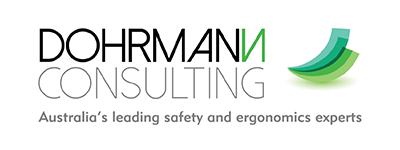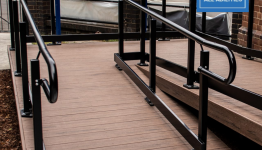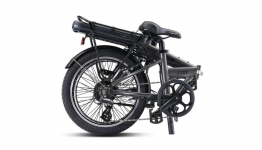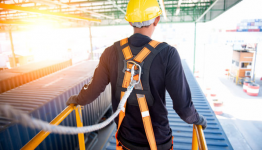25 January, 2023

As ergonomists and safety specialists, we are frequently asked if we can provide ‘how to lift’ training to minimise the risks of injury from manual tasks within the workplace. Although injuries from these tasks are common, we believe ‘how to lift’ training, by itself, is not the right approach to managing hazardous manual tasks. So how do we recommend managers keep their staff safe from such injuries?
A musculoskeletal disorder (MSD) is any disorder of the tissues that make-up the musculoskeletal system which include: muscles, nerves, tendons, joints, cartilage, ligaments, and spinal discs. Conditions are typically characterised by pain (often persistent) and limitations to mobility and dexterity. MSD’s can severely impact the lives of those experiencing such conditions. They can reduce people’s ability to work and reduce one’s ability to participate in society with sufferers often experiencing lower levels of well-being.
Routine lifting of heavy objects, occurrence of high, sudden, or repetitive forces, frequent overhead work and exposure to vibration are common causes of musculoskeletal disorders in the workplace. From tire fitting to warehouse picking, card dealers to farming, construction or health care tasks, we see many injuries from hazardous manual tasks performed repetitively, awkwardly, or unsafely that can often be avoided with the right management plan.
Most employers or managers think that ‘how to lift’ training is a requirement under Work/Occupational Health and Safety (WHS/OHS) laws. However, this is not the case. Providing generic ‘how to lift’ training is not a prescribed requirement of any WHS/OHS legislation in Australia or New Zealand. Generic ‘how to lift’ training is typically ineffective because it neither changes the risk factors that hazardous manual tasks expose workers to, nor does it address the source/s of the risk of musculoskeletal disorders which include the behaviours of both employers and employees.
The risks of MSD’s in the workplace can be managed with adequate strategies to reduce, eliminate and control risks. Factors that are effective in managing the risks of MSD include adequate management and planning of:
- The design and layout of the work area.
- The systems of works used.
- Physical and psychological risk factors.
- Workplace environment conditions.
- The characteristics of the load being handled.
- Use of equipment and tools.
The design and layout of the work area
The most effective way to minimise risk from hazardous manual tasks in the workplace is to design the work area to suit the capabilities and limitations of the workforce. Sound familiar? This is exactly what the ergonomics approach is, fitting the task to the user as opposed to fitting the user to the task. Using ergonomic principles and measurements, with an engineering application to design or refit of the layout is an effective way of managing risks in the workplace.
Systems of works used
Without completely removing the risk, planning of engineering and administrative controls can be used to set policies and procedures to reduce the risk of workplace hazards from manual tasks. Rotating workers through jobs, routinely changing the direction of work or setting limitations on how high a rack can be stacked will assist in minimising risks. This is also where training programs can be useful, however as discussed earlier, a simple and generic ‘how to lift’ training session is not an effective approach. Manual handling, just like any skill, takes time and deliberate practice to learn, improve and master. The design of training needs to take into account how people learn as well as how the workplace environment, system of work and characteristics of the workers themselves shape their lifting behaviour. In addition, training in the recognition of risk factors for MSDs and instructions in work practices and techniques that can ease the task demands is required to effectively reduce the risk.
Australian Codes of Practice/Compliance Codes outline that training should cover:
- Manual task risk management, including identification of manual hazardous task risk factors and sources of risks.
- Specific manual task risks and the measures in place to control them.
- How to perform manual tasks safely, including the use of mechanical aids, tools, equipment and safe work procedures.
- How to report a problem or maintenance issues.
By implementing procedures into the workplace practice to manage a hazardous manual task can increase the safety of workers.
Physical or psychological risk factors
Physical risk factors such as bending into awkward positions to retrieve stock can increase the risk of injury. The occurrence of mental stress such as unrealistic expectations of pick rate or lack of job control can lead to psychological risk factors. In many cases we investigate incidences that occurred as the employee was under pressure to get the job done within a limited time frame, increasing their need to take risks. Seemingly every-day pressure of one’s job such as getting the task done in time for the truck to arrive, or finishing their allocated work to leave on time to pick up the kids, can increase the risk. These factors should not be increasing stress or prioritised over the safety of employees.
Workplace environment conditions
Setting standards for workplace conditions can also assist in reducing risks. Appropriate lighting or non-slip flooring, for example, can reduce the risk of injury in the workplace. Controlling the safety culture of the workplace is also a useful exercise in managing risks.
The characteristics of the load being handled
Understanding the limitations of human capabilities can ensure that the tasks performed and the loads being handled are not exposing the employee to risk of a MSD. Each worker will have different capabilities and this must be taken into account when designing and allocating tasks to employees. In some instances, employers may need to set standards or safe limits and communicate these to suppliers to ensure that loads are suitable for safe operations.
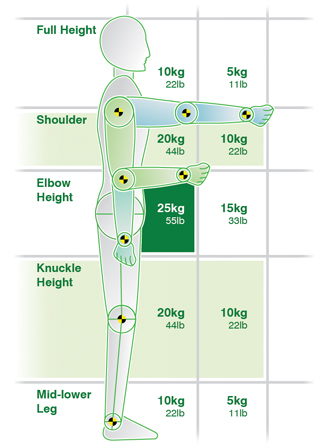
Figure 1. Safe Lifting zone
Use of tools and equipment
It is no coincidence that this is the final factor in the management of risks from hazardous manual handling in the workplace. Personal protective equipment is the lowest ranked control measure in the hierarchy of controls. This is because the hazard remains unmodified and risk control relies on choosing appropriate protective equipment, training employees to use it effectively, and ensuring employee to use consistently. For example, some workers may choose to use wrist splints, or back braces to offer personal protection. Although these devices may, in some situations, reduce the duration, frequency or intensity of exposure, evidence of their effectiveness in injury reduction is inconclusive. In some instances, these devices may decrease one’s exposure but increase another because the worker has to “fight” the device to perform the work. Some tools can in fact be beneficial in reducing the risk of injury, such as equipment to relieve heavy load lifts or use of handles or slotted hand holes to improve the grip on heavy items. While PPE (such as safety glasses) and manual handling equipment (such as mechanical aids) can be effective, both the choice equipment and the methods of use should be incorporated through the design and systems implementations stage, with adequate engineering and administrative control measures in place for safety and efficiency to be achieved.
At Dohrmann consulting we often recommend tools and manual handling equipment from sitecraft, for example the multilift drum lifter. Many options for mechanical aids are available to assist in the safety of your employees. Engaging an ergonomist can ensure risk are managed effectively and the appropriate tools are used specific to the needs of your workplace.
Musculoskeletal disorders are associated with high costs to employers including absenteeism, lost productivity, increased health care, disability, and worker’s compensation costs sometimes also leading to early retirement. MSD cases are more severe than any other nonfatal injury or illness. According to data from the Global Burden of Disease (GBD 2019), Musculoskeletal disorders are the biggest contributor to years lived with disability (YLD), followed closely by unintentional injuries, both can be caused by hazardous manual task in the workplace, and both can be reduced with adequate management.
A workplace ergonomics plan can aim to prevent or control injuries and illnesses by eliminating or reducing worker exposure to musculoskeletal disorder risk factors using engineering design and administrative controls.
Contact us to discuss with one of our ergonomics experts, how we can improve the safety and efficiency of your workplace.
You may also be interested in the following information and resources:
